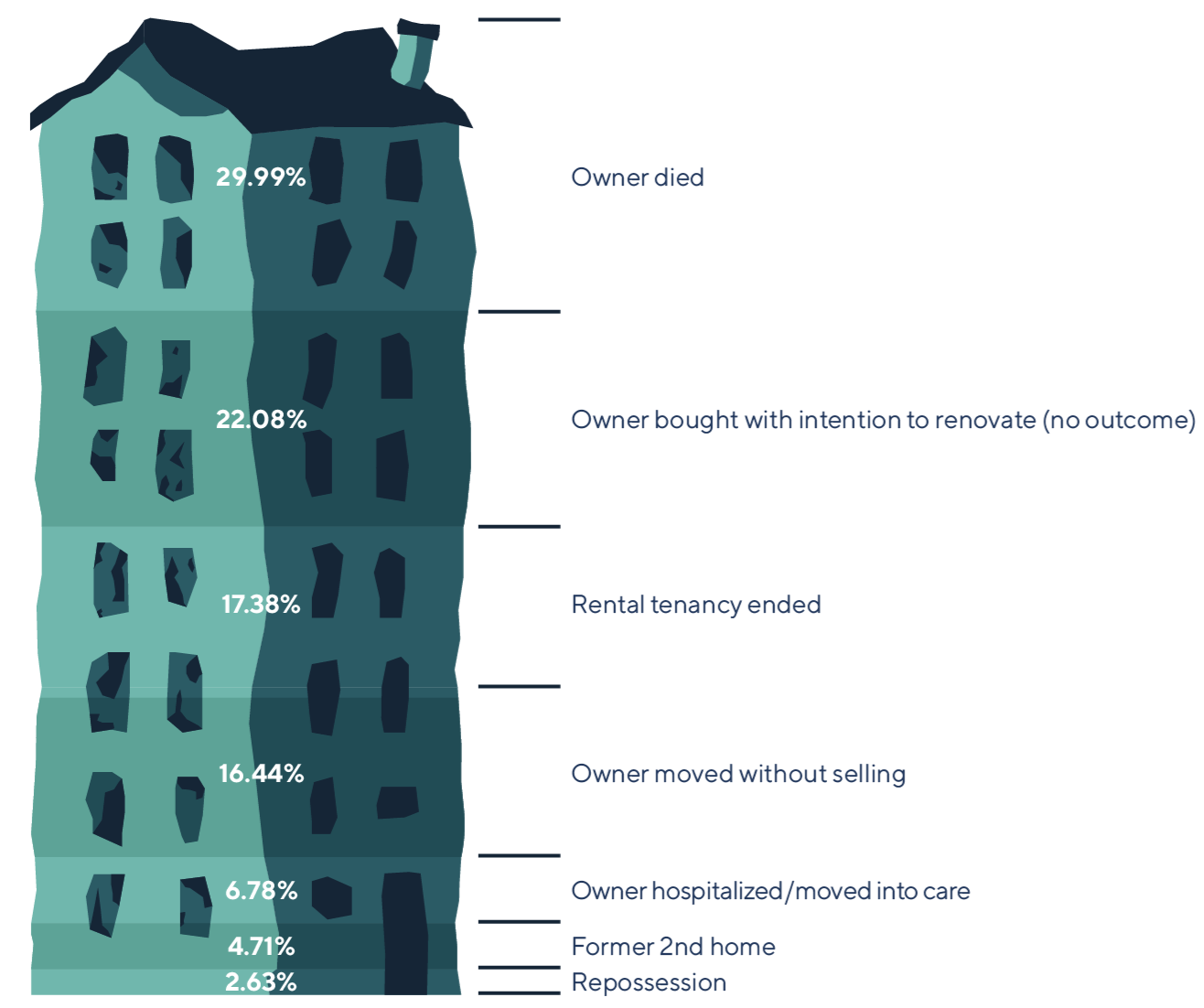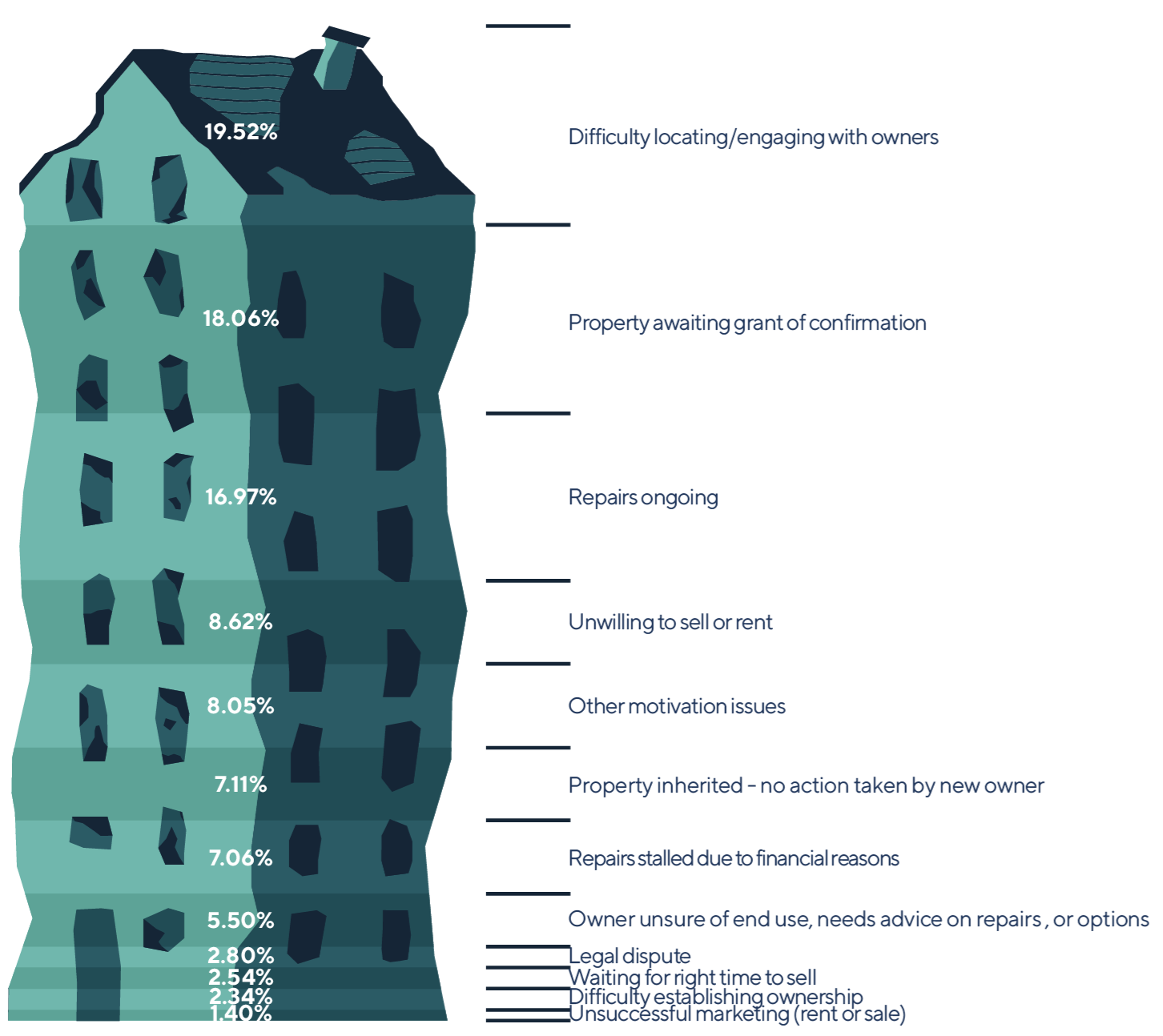Uploaded 15/06/23
Annual Impact Report 2022 - 2023
As part of our annual survey, we gather information from EHOs on why homes became empty and why they remain empty. EHOs provide this in relation to their active caseload where known.
In 22/23 death of the previous owner was once again the most common reason for homes becoming empty. This has been the case in most years where we have collected this information. The proportion of long term empty homes that became empty for this reason rose from 23% to 30%. This may be linked to the pandemic, given the time that can pass between an owner dying and the home forming part of an empty homes officer’s caseload.
There were significant falls this year in the number of homes becoming empty because of owner moving without selling (from 24.9% to 16.44%), and from rental tenancies ending (23.1% to 17.38%). There was an equally significant rise in the number of homes that became empty as a result of owners moving with the intention of renovating (17.4% to 22.08%). The decline in homes empty as a result of the end of rental tenancies can be seen as positive if it reflects a decrease in evictions or rental properties left empty.
Other reasons for homes becoming empty accounted for broadly similar proportions to last year.

The three main reasons for homes remaining empty were
• Difficulty locating or engaging with owners (20%)
• Property awaiting grant of confirmation (18%) and
• Repairs ongoing (17%).
Between them, these three reasons accounted for over half of the reasons in all cases.
While homes in the latter 2 categories are likely to be properties that may be returned to use over the coming year as confirmation is granted or repairs completed, the cases that are currently stalled through difficulty locating or engaging owners may be a lot harder to return to use. Owners walking away from properties that they either bought or inherited and then seeing the blight they cause as someone else’s problem is a common feature of some of the most difficult cases that EHOs and our advice service have to deal with.
The limited enforcement options available to return a property to use where an owner has walked away and can’t be found or refuses to engage, does nothing to incentivise an owner to bring a property back to use or penalise them for failing to do so.
Other common reasons for homes remaining empty include:
• Unwilling to sell or rent (9%) other motivation issues (8%) and
• Property inherited by owners – no action taken (7%).
The recent announcement of consultation on increasing the council tax premium on long term empty properties, may help to bring some of these homes back to use by increasing the cost of leaving them empty.
However, in some instances owners may simply choose to pay the additional premium while leaving the property empty, whilst for the owners of homes remaining empty because of repairs stalled due to financial reasons, an additional premium will merely add to the financial difficulties they are already facing and further delay, or even prevent, any attempts to return their property to use.
For this reason, the partnership believe that any money raised through an additional premium should be invested directly into support for owners to bring empty homes back into use as social or affordable housing.
We also believe that it is important that additional premiums cannot be applied in instances where a home is empty because of systemic reasons that mean there is little or no demand for property and there is little or no guarantee that any costs of refurbishment would be recovered due to limited potential to sell or rent the property afterwards.

